
The Bay of Laoniu-wan (老牛湾) is situated between The Province of Shanxi of China and Inner Mongolia bordered by the River of Huang-he. Pian-guan county of Shanxi lies to its south, while to its north, it is the Mongolian Town Qingshui-he and to its west, Jungar Banner of Ordos Highland. In the past, people always joked that it was the only place where the morning call of a crowing cock was able to reach people of three towns in the same morning.


The mythical legend about Laoniu-wan was related to the Chinese history dated back to about 4500 years ago when Emperor Dayu (大禹) was focusing on the drainage control of water flooding in the country. It was said that there was once at that time, people was greatly suffered with a serious flood after it non-stopped raining for 81 days. Every body sincerely prayed to the Heavenly Jade God for the rescue of lives. The Heavenly Jade God thus sent down an old sacred ox to plow a canal to channel the water. The Ox when continued his work in Bian-guan at night, was startled by a bright sacred lamp and reversed. The canal excavation instead of going straight, deviated and meandered to a 180 degree turning. The Old Ox Bay Laoniu-wan was then borne.

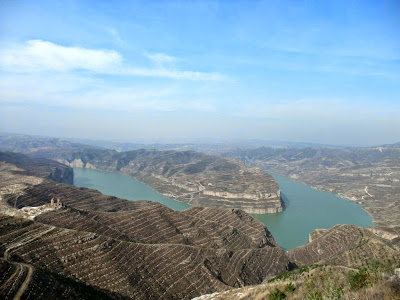
Today, The Old Ox Bay has turned into a hot ecological attraction to many tourists, photographers, artists, geologists and many nature lovers.







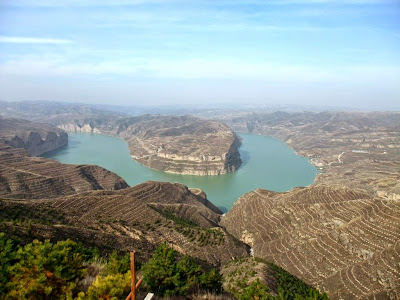




The water of Yellow River is not yellow from this spot and from here it began to turn its direction into the Province of Shanxi.


Laoniu-wan is entirely circled up by extraordinary unique geological landscape.




In memory to the old mythical legend, a huge statue of ploughing ox was erected to overlooking the bay.




Laoniu-wan is now expanding with new structures added to its natural venue. We just hope that the development wont go too far and spoil its Eco-friendly environment and natural beauty.


Taoism Teachings emphasize very much on nature and the founder, Master Laozhi riding a cow was always a symbol of nature.



Last glimpse of Launiu-wan

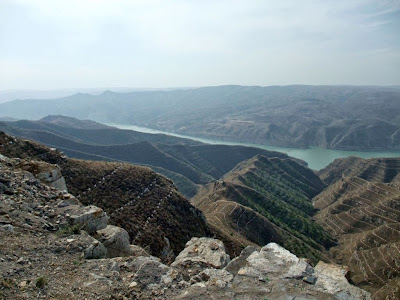
Spectacular scenery of Launiu-wan on the way to Village Wanjia-zhai.


Yellow River has nine main curves with 18 bends and Laoniu-wan is considered the first bend of the river as written high up on its arch gate.


Some complimentary phrases and poem of the vista.



Wanjia-zhai is the hub of Shanxi's greatest hydroelectric power plant. From here, water of Huanghe River began to direct into the 10 over miles long water storage dam that lies in the canyon between Shanxi and Inner Mongolia.


The suspending bridge that built across crystal clear Huanghe River in Wanjia-zhai is the longest and highest in Asia.


The left bank of Huanghe River is Pian-guan County of Shanxi, while to its right, it is Jungar Banner autonomous region of Inner Mongolia.


Cave Dwellings lining at hilly slopes are common scenery at this north west part of Shanxi

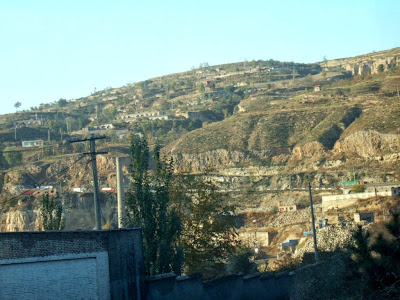



The magnificent sight of vast horizon hilly landscape which local Chinese addressed as Yellow Loess Plateau.


Gorgeous!
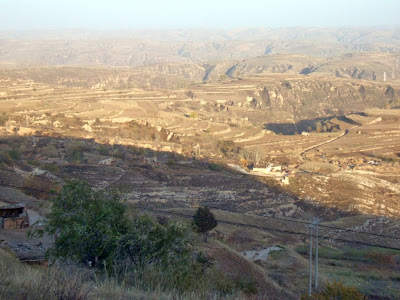















Unique rock and soil formation!



Proudly announced that it is the first bend of Huanghe River.
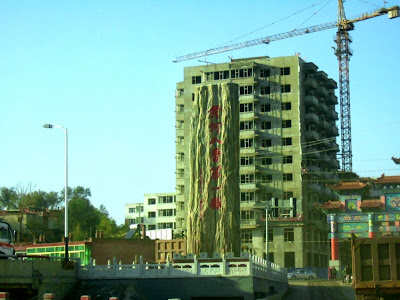

Each and every arch gate carries with its own slogan, that reflects the history of the town.




Signboards are very clear along the way.




Bidding goodbye to legendary Old Ox Bay.


Hundreds of over-loaded coal trucks were using this road day and night. Their excessive usage had badly damaged the entire traffic surface. The road bed of the 8km long road had thoroughly exposed and remains only a mess of broken stones. It is a nightmare for all passenger car-drivers to travel by this way but people can hardly avoid it as in Shanxi, it is presently the only direct route to Laoniu-wan or nearby spots.


We took about two hours just to squeeze within hundreds of heavy loaded coal trucks and drove through the 8km long badly broken road. We experienced the most unbearable and risky driving in our journey.


No comments:
Post a Comment